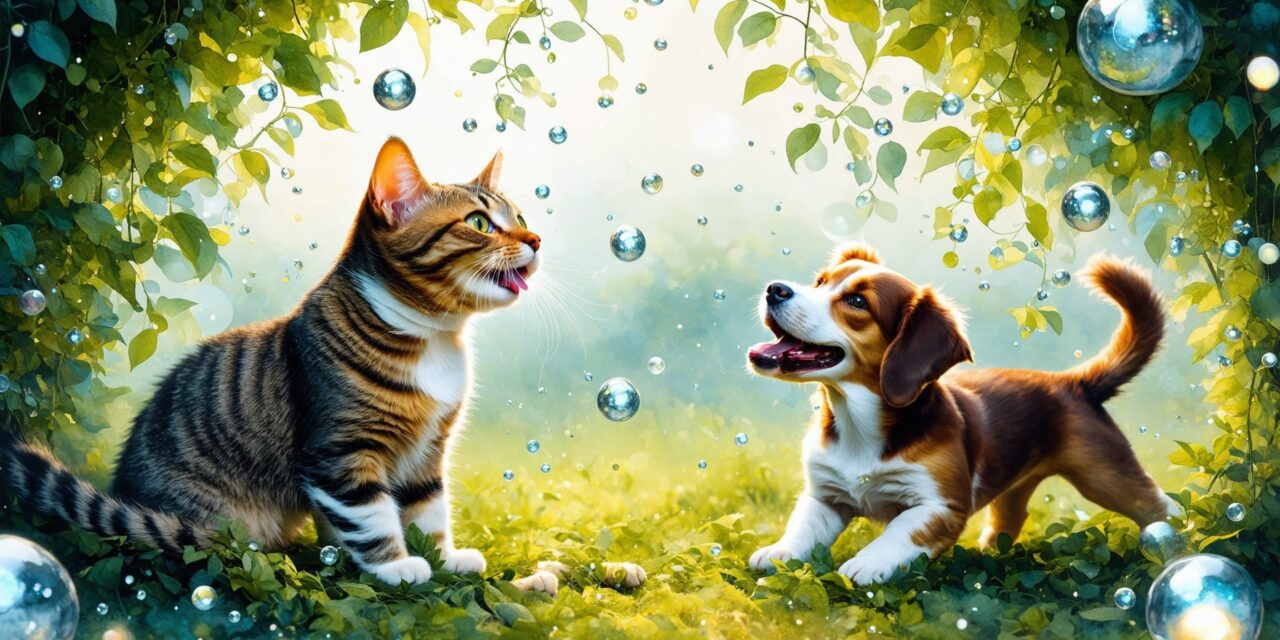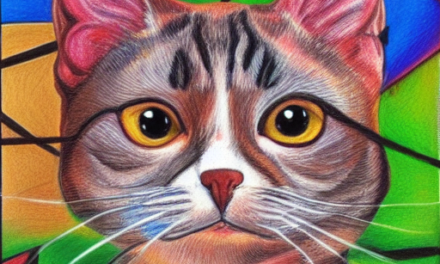Key Takeaways
- Enhanced Playfulness: Silver vine is more effective than catnip, stimulating approximately 70-80% of cats compared to 50-70% for catnip.
- Unique Properties: Engages multiple senses, providing a richer experience for cats through taste and sight, leading to prolonged enjoyment.
- Health Benefits: Offers dental health advantages by reducing plaque and tartar buildup while also serving as a natural insect repellent.
- Stress Relief: Silver vine helps alleviate anxiety and promotes relaxation, making it ideal for cats with behavioral issues.
- Versatile Use: Available in various forms like sticks, powders, and sprays, allowing pet owners to easily incorporate it into playtime.
Are you a pet owner wondering if silver vine is better than catnip? You’re not alone! In this article, we’ll dive deep into the fascinating world of silver vine for cats and explore its unique benefits, uses, and effects on both cats and dogs. We’ll start by understanding the differences between silver vine and catnip, highlighting the unique properties that make silver vine a compelling choice for stimulating your feline friend. From the science behind why cats go crazy for silver vine to its potential health benefits, including dental health, we’ll cover it all. Plus, we’ll provide practical tips on how to use silver vine sticks effectively and discuss safety considerations to ensure your pets enjoy it responsibly. Whether you’re looking to enhance your pet’s playtime or simply curious about this intriguing plant, our comprehensive guide will equip you with everything you need to know about silver vine. So, let’s embark on this journey and discover if silver vine truly reigns supreme over catnip!
Understanding the Differences Between Silver Vine and Catnip
Silver Vine vs Catnip: What’s the Real Difference?
Silver vine (Actinidia polygama) is often considered superior to catnip (Nepeta cataria) for stimulating feline playfulness and euphoria. Research indicates that approximately 70-80% of cats respond positively to silver vine, compared to about 50-70% for catnip, making it a more effective option for many felines. The active compounds in silver vine, including actinidine and other iridoids, create a euphoric effect similar to that of catnip, but with a longer duration of action, typically lasting around 30 minutes. This extended response can lead to increased playfulness and activity, which is beneficial for a cat’s physical and mental health.
For cat owners looking to enhance their pets’ environment, incorporating silver vine can be a great alternative, especially for those cats that show little interest in catnip. Additionally, silver vine can be offered in various forms, such as dried leaves, powders, or as a spray, allowing for versatile use in toys or scratching posts. In summary, if your cat is unresponsive to catnip, silver vine is a highly recommended alternative that may provide greater stimulation and enjoyment. Always ensure that any plant offered to your cat is safe and sourced from reputable suppliers.
The Unique Properties of Silver Vine for Cats
Silver vine possesses unique properties that make it particularly appealing to cats. Unlike catnip, which primarily affects a cat’s sense of smell, silver vine engages multiple senses, including taste and sight. This multifaceted stimulation can lead to a more intense and varied reaction in cats. The silver vine plant can be found in various forms, such as silver vine sticks and silver vine cat toys, which can be used to encourage play and exploration.
Moreover, the presence of actinidine in silver vine not only elicits a euphoric response but may also promote a sense of relaxation afterward, making it a great addition to a cat’s playtime routine. For pet owners, understanding these unique properties can help in selecting the right products to enhance their cat’s well-being. Incorporating silver vine into your cat’s playtime can lead to healthier, more active, and happier felines.

Understanding the Differences Between Silver Vine and Catnip
When it comes to feline favorites, silver vine (Actinidia polygama) and catnip (Nepeta cataria) often lead the pack. However, understanding the differences between these two plants can help you make informed choices for your furry friends. While both plants can elicit playful and euphoric responses in cats, silver vine offers unique properties that may make it a superior option for some pets.
Silver Vine vs Catnip: What’s the Real Difference?
Silver vine contains two active compounds, actinidine and 2,4-dimethylthiazole, which can induce a stronger euphoric effect in cats compared to catnip. Research indicates that approximately 70-80% of cats respond positively to silver vine, while only about 50-70% react to catnip. This makes silver vine an excellent alternative for cats that do not respond to catnip. Additionally, silver vine can provide stress relief, enhance dental health, and serve as a natural insect repellent, making it a versatile choice for pet owners.
The Unique Properties of Silver Vine for Cats
Silver vine offers several benefits that set it apart from catnip:
- Stress Relief: The compounds in silver vine can significantly reduce anxiety and stress levels in cats, making it beneficial for those with behavioral issues.
- Dental Health: Chewing on silver vine can help reduce plaque and tartar buildup, promoting healthier gums and teeth.
- Enrichment and Play: Silver vine encourages play behavior, essential for a cat’s physical and mental well-being, helping to prevent obesity.
- Natural Insect Repellent: Silver vine can deter certain pests, providing a dual-purpose plant for cat owners.
Incorporating silver vine into your cat’s routine can provide numerous benefits, from stress relief to dental health. Always consult with a veterinarian before introducing new plants to ensure they are safe and suitable for your pet’s specific needs.
Understanding the Differences Between Silver Vine and Catnip
When it comes to feline favorites, silver vine (Actinidia polygama) and catnip (Nepeta cataria) often take center stage. However, the real difference lies in their chemical compositions and the effects they have on our furry friends. Silver vine contains two primary compounds—actinidine and iridoids—that create a more intense reaction in many cats compared to catnip. While both plants can elicit playful behaviors, studies show that approximately 70-80% of cats respond positively to silver vine, whereas only about 50-75% react to catnip. This heightened sensitivity may be due to genetic factors, as not all cats have the receptors that respond to these compounds.
Silver Vine vs Catnip: What’s the Real Difference?
The differences between silver vine and catnip extend beyond mere popularity. Here’s a closer look at their unique properties:
- Chemical Composition: Silver vine’s actinidine is primarily responsible for the euphoric effects observed in cats, stimulating their sensory receptors and leading to behaviors such as rolling, purring, and playful antics. In contrast, catnip primarily contains nepetalactone, which elicits a milder response.
- Behavioral Response: Cats that engage with silver vine often display more vigorous playfulness, which can be beneficial for their mental and physical health. This aligns with wellness coaching principles that emphasize the importance of play for overall well-being.
- Forms of Use: Silver vine can be offered in various forms, including dried leaves, powders, or infused toys. Pet owners should experiment with different methods to find what their cats enjoy most.
The Unique Properties of Silver Vine for Cats
Silver vine is not just a fun addition to your cat’s playtime; it also offers several unique properties that can enhance their overall wellness:
- Mental Stimulation: Engaging with silver vine can provide essential mental stimulation for cats, helping to keep their minds sharp and active.
- Physical Exercise: The playful antics triggered by silver vine encourage cats to move, jump, and play, contributing to their physical health.
- Natural Insect Repellent: The iridoids in silver vine serve as natural insect repellents, making it a dual-purpose plant for both play and pest control.
For those interested in incorporating silver vine into their pet care routine, consider exploring Chewy for a variety of silver vine products, including silver vine sticks and cat toys. Understanding these differences can help you make informed choices about your cat’s playtime and wellness.
Health Benefits of Silver Vine for Cats
Silver vine is not just a playful addition to your cat’s environment; it offers significant health benefits that every pet owner should consider. This natural herb, often compared to catnip, has unique properties that can enhance your cat’s overall well-being. From promoting dental health to providing mental stimulation, silver vine is a versatile option for enhancing your feline’s life.
Silver Vine for Cats: Dental Health and Beyond
Silvervine is indeed beneficial for cat dental health. Here’s a comprehensive overview of its advantages:
- Teeth Cleaning: Silvervine sticks help in mechanically cleaning your cat’s teeth as they chew, which can reduce plaque and tartar buildup. This natural chewing action is essential for maintaining oral hygiene.
- Freshening Breath: The natural properties of silvervine can contribute to fresher breath in cats. The chewing process stimulates saliva production, which helps wash away food particles and bacteria that cause bad breath.
- Oral Health Protection: Regular use of silvervine can protect against dental diseases, such as gingivitis and periodontal disease. These conditions can lead to more severe health issues if left untreated.
- Natural Enzymes: According to research, silvervine contains natural enzymes that effectively break down plaque and tartar. This enzymatic action is crucial for promoting healthy teeth and gums in cats.
- Behavioral Benefits: Beyond dental health, silvervine can stimulate playfulness and reduce stress in cats, contributing to their overall well-being. Engaging in play can also indirectly support dental health by encouraging chewing and gnawing.
For optimal dental care, it’s essential to combine silvervine with regular veterinary dental check-ups and professional cleanings. Studies have shown that a holistic approach to pet dental care, including diet and regular dental treats, can significantly enhance oral health. Incorporating silvervine into your cat’s routine can be a natural and effective way to support their dental health while also providing enrichment and enjoyment.
How to Grow Silver Vine for Cats: A Guide for Pet Owners
Growing silver vine at home can be a rewarding experience for both you and your cat. Here are some tips to successfully cultivate this beneficial plant:
- Choosing the Right Location: Silver vine thrives in a sunny spot, so select a location that receives ample sunlight throughout the day. A south-facing window is ideal for indoor growth.
- Soil Requirements: Use well-draining soil enriched with organic matter. This will help the plant establish strong roots and promote healthy growth.
- Watering: Water the silver vine plant regularly, ensuring the soil remains moist but not waterlogged. Overwatering can lead to root rot, so it’s essential to find the right balance.
- Harvesting: Once the plant matures, you can harvest the leaves and stems to create silver vine sticks for your cat. These can be a delightful and engaging toy for your feline friend.
- Propagation: Silver vine can be propagated from seeds or cuttings. If you choose seeds, plant them in spring for the best results.
By growing silver vine at home, you can provide your cat with a fresh and organic source of this stimulating herb, enhancing their playtime and overall health.

Can Cats Have Too Much Silver Vine?
Understanding the safety of silver vine is crucial for pet owners who want to enrich their cats’ lives without causing harm. While silver vine for cats offers numerous benefits, moderation is key to ensuring a safe and enjoyable experience.
Silver Vine for Cats Safety: What You Need to Know
Silver vine is generally safe for cats, but there are important considerations to keep in mind:
- Overstimulation: Cats can experience overstimulation from silver vine if they are exposed to it too frequently or for prolonged periods. This can lead to irritability and restlessness, as the heightened sensory experience may overwhelm them.
- Desensitization: Regular exposure to silver vine can cause cats to become desensitized, reducing their responsiveness to its effects over time. This phenomenon is similar to what occurs with catnip, where the novelty wears off with excessive use.
- Stomach Upset: While silver vine is generally safe, ingesting large amounts, especially the bark or wood from silver vine sticks, may lead to mild digestive issues such as nausea or stomach upset. It’s important to monitor your cat’s reaction to ensure they do not consume excessive quantities.
- Moderation is Key: Just like with catnip, moderation is crucial when introducing silver vine to your cat’s playtime. Limiting exposure can help maintain its effectiveness as a stimulating enrichment tool.
- Follow Product Instructions: Always adhere to the dosage guidelines provided with the silver vine product. This ensures safe usage and maximizes the benefits for your cat.
- Observe Your Cat: Pay close attention to your cat’s behavior when using silver vine. Adjust the frequency and amount based on their reactions to prevent overstimulation or disinterest.
- Young Kittens: Silver vine is safe for kittens, but very young kittens may not respond to it. As they mature, their reactions may become more pronounced, similar to older cats.
- Consult a Veterinarian: If you notice any adverse reactions or if your cat exhibits unusual behavior after consuming silver vine, discontinue use and consult your veterinarian for guidance.
Signs of Overindulgence: Can Cats Have Too Much Silver Vine?
Recognizing the signs of overindulgence in silver vine is essential for maintaining your cat’s health:
- Behavioral Changes: If your cat becomes overly hyperactive or agitated after using silver vine, it may be a sign of overstimulation.
- Digestive Issues: Watch for symptoms like vomiting or diarrhea, which could indicate that your cat has ingested too much silver vine.
- Lack of Interest: If your cat suddenly loses interest in silver vine after previously enjoying it, they may be experiencing desensitization.
- Restlessness: Cats that are restless or unable to settle down may need a break from silver vine to regain their calm.
By being mindful of these signs and following the guidelines for safe usage, you can ensure that silver vine remains a delightful and enriching experience for your feline friend.
Understanding the Safety of Silver Vine
When considering silver vine for cats, it’s essential to understand its safety profile. Silver vine, or Actinidia polygama, is generally regarded as safe for feline companions. However, like any new addition to your pet’s environment, moderation is key. Overindulgence can lead to mild side effects, which is why it’s crucial to monitor your cat’s interaction with silver vine.
Silver Vine for Cats Safety: What You Need to Know
Silver vine is not toxic to cats, making it a popular alternative to catnip. Many pet owners have reported positive experiences with silver vine sticks for cats, noting that they can stimulate playful behavior without adverse effects. However, it’s important to introduce silver vine gradually. Start with small amounts to gauge your cat’s reaction. If your cat shows signs of excessive excitement or agitation, it may be best to limit their exposure.
Additionally, ensure that any silver vine products, such as silver vine cat toys or silver vine sticks, are sourced from reputable suppliers. Organic silver vine for cats is recommended to avoid any harmful pesticides or chemicals. Always consult with your veterinarian if you have concerns about your cat’s health or behavior when introducing new items into their routine.
Signs of Overindulgence: Can Cats Have Too Much Silver Vine?
While silver vine is safe, it’s possible for cats to have too much of a good thing. Signs of overindulgence may include:
- Excessive drooling or salivation
- Hyperactivity or agitation
- Vomiting or mild gastrointestinal upset
If you notice any of these symptoms, it’s advisable to reduce the amount of silver vine your cat has access to. Providing silver vine in a controlled manner can help ensure that your cat enjoys its benefits without any negative side effects. Always keep an eye on your pet’s behavior and consult with a veterinarian if you have any concerns.
Is Silver Vine Better Than Catnip?
When comparing silver vine and catnip, many pet owners wonder which is more effective for stimulating their feline friends. Both plants belong to the Nepeta family, but they have distinct differences in their effects on cats. Silver vine (Actinidia polygama) is often considered superior due to its unique compounds that can elicit a stronger response in cats, especially those that may not react to catnip. While catnip primarily contains nepetalactone, silver vine contains actinidine and other compounds that can engage a broader range of cats, making it a popular choice among pet owners.
Understanding the Differences Between Silver Vine and Catnip
Silver vine and catnip differ significantly in their chemical compositions and the reactions they provoke in cats. While catnip affects approximately 50-75% of cats, silver vine can stimulate nearly all felines due to its diverse active ingredients. This makes silver vine a more reliable option for pet owners looking to enhance their cats’ playtime. Additionally, silver vine can be found in various forms, including silver vine sticks and powders, providing multiple ways to engage your cat.
The Unique Properties of Silver Vine for Cats
Silver vine offers several unique properties that make it appealing for cats. Its ability to stimulate playfulness and reduce stress is well-documented. The plant’s compounds can lead to increased activity levels, encouraging exercise and mental stimulation. Moreover, silver vine is often considered safer than catnip, as it does not lead to overexcitement or aggression in most cats. Pet owners can find silver vine products, such as silver vine cat toys or silver vine sticks for cats, at various retailers, making it easy to incorporate this beneficial plant into their pets’ lives.
What is Silver Vine Used For?
Silver vine is primarily used to enhance the well-being of cats by providing mental stimulation and promoting playful behavior. It serves as an excellent alternative to catnip, especially for cats that do not respond to it. The plant can be utilized in various forms, including dried leaves, powders, and sticks, allowing pet owners to choose the best option for their feline companions.
Silver Vine Benefits: Why Pet Owners Should Consider It
Pet owners should consider silver vine for several reasons. First, it can help alleviate boredom in indoor cats, encouraging them to engage in playful activities. Second, silver vine has been shown to promote exercise, which is essential for maintaining a healthy weight and overall well-being. Additionally, the plant’s calming effects can help reduce anxiety in cats, making it a valuable tool for those with nervous or shy pets. Overall, incorporating silver vine into your cat’s routine can lead to a happier and healthier feline.
How to Use Silver Vine for Cats: Tips and Tricks
Using silver vine for cats can be straightforward and enjoyable. Here are some tips to maximize its benefits:
- Introduce Gradually: Start by offering small amounts of silver vine to see how your cat reacts. This can help prevent overstimulation.
- Use Silver Vine Sticks: Silver vine sticks are an excellent way for cats to engage with the plant. They can chew on the sticks, which can also help with dental health.
- Incorporate into Playtime: Use silver vine powder or leaves to sprinkle on toys or scratching posts to encourage play and exploration.
- Monitor Reactions: Always observe your cat’s behavior after introducing silver vine. Most cats will show signs of excitement, but it’s essential to ensure they remain calm and happy.












